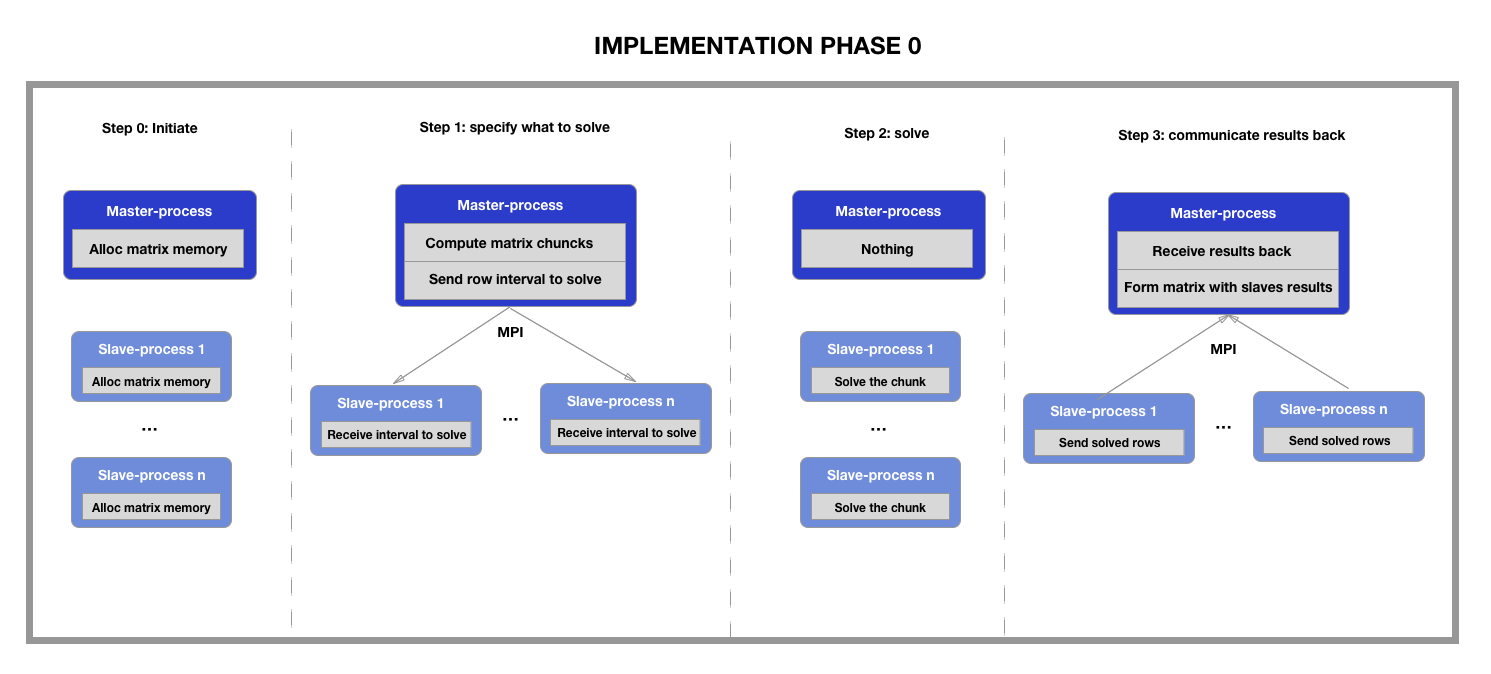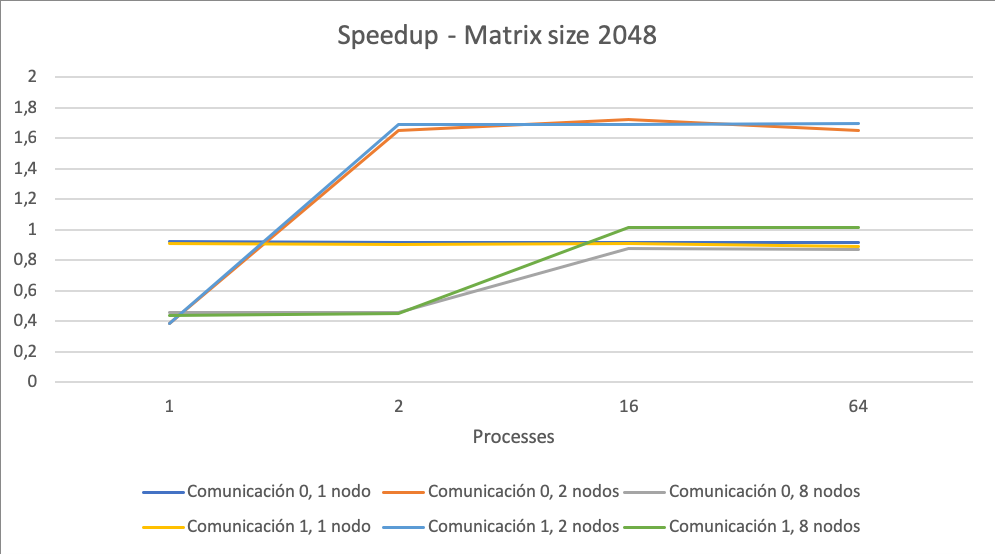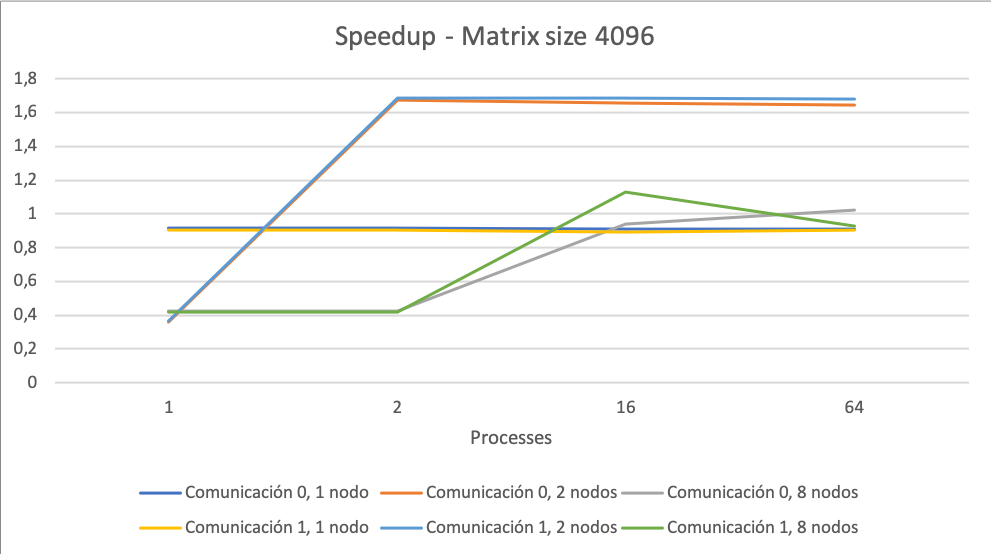This small project contains the implementation of the Gauss Seidel linear equations solver, using MPI for parallelizing the load over distributed computers. The Gauss Seidel method for solving linear equations is an iterative method, in which the values for the given variables keep changing until a certain threshold of variance is reached.
The goal of this projet was to provide a faster resolution time than the sequential version of the code, which is also provided in the repository.
In order to parallelize the calculations, certain data dependency constraints need to be omitted. This constraint relaxation will only mean that the solver function will take longer iterations to reach the predefined threshold. However, this is fine with us, as the speed up that we achieve by splitting the calculation, is way higher than the cost of a couple more iterations.
1. Decomposition: each process will execute the solver function over a set of rows. Given data dependency with the cells above and below the target one, the number of matrix rows given to each node is N+2, being N, the number of rows that node needs to compute.
2. Assignation: in order to assign rows to nodes, we have applied the following logic:
int max_rows_per_node = (int)(ceil((n-2) / num_nodes) + 2;
int node_rows = max_rows_per_node * n;
// Case in which the node receive the full set of elements
if (node_offset + node_elems <= (n*n)) {
return node_elems;
}
// Case of the last node, which could get less elements
else {
return (n*n) - node_offset;
}DISCLAIMER: This logic is splitted between get_max_rows( ) and get_node_rows( ).
3. Orchestation: In order to split the rows among the nodes, MPI built-in functions are used. We provided 2 types of communications between the nodes:
A) Point-to-point: uses MPI_Send( ) and MPI_Recv( ).
B) Collective: uses MPI_Scatterv( ) and MPI_Gatherv( ).
4. Mapping: Finally, a mapping between the computational units (processes), and hardware components (processors cores in different machines) needs to be made. In order to specify the number of machines to distribute the processes, a machines.txt file need to be created, with the public IPs of those machines.
DISCLAIMER: In our specific case, we named the machines by nicknames, and not IPs.
The repository contains:
- Sequential code version (gc_seq.c).
- MPI code version (gs_mpi.c).
- MPI machines file (machines_1x1.txt).
- Bash script: for executing with multiple configurations (exec_mach_1x1.sh).
- Makefile: used to compile and clean the project.
First of all, the MPI compiler needs to be installed. Later on, the code needs to be compiled by using the following shell command:
$ makeOnce the code is compiled, it can receive 2 arguments:
- Matrix size: usually a power of 2 (64, 128, 256, 1024...).
- Communication type: 0 for point-to-point and 1 for collective.
The execution command will be as follows:
$ mpiexec -f <machines_file> -np <num_nodes> -ppn <processes_per_node> ./gs_mpi <matrix_size> <communication>Example:
$ mpiexec -f machines_1x1.txt -np 2 -ppn 4 ./gs_mpi 1024 0As the whole goal of this project was to speed-up the resolution of the linear equation system, it is important to state the obtained acceleration. The speed-up values have been computed using the Amdahl's law:
This project was developped by:


